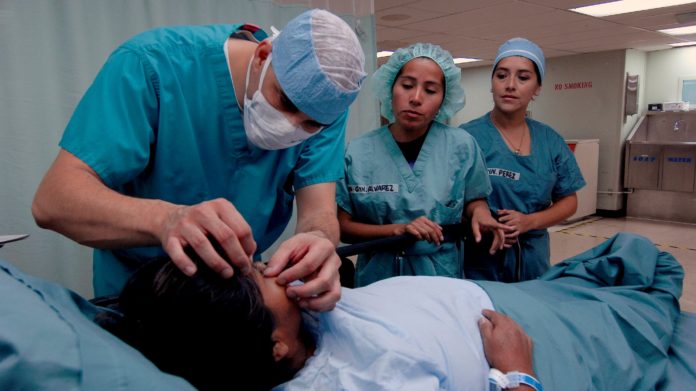When Emilio Alarcon first moved to Canada as a student, he never imagined that he would ultimately make Canada his permanent home. But now he’s the director of BioEngineering and Therapeutic Solutions (BEaTS) Research, an international and interdisciplinary team of scientists working on advanced biomaterials to treat patients with failing organs.
BEaTS Research is interdisciplinary in nature: a diverse team of scientists with backgrounds including physics, engineering, cell biology, biochemistry and more are involved. The group is supported by funding from NSERC and the Canadian Institutes of Health Research.
“It’s a dynamic, international team,” says Alarcon. “We’re always on the lookout for surgeons, ophthalmologists… people who are dedicated to improving the quality of life for patients.”
Innovation is crucial, but the cultivation of the next generation of scientists is also a cornerstone of their philosophy. BEaTS Research hosts a number of undergraduate and grad students who are given the freedom to explore their own areas of interest.
“At the end of the day, they’re the future, and the most important discovery is not another paper or technology, it’s another science.”
Grand ambitions take on daunting medical mysteries
The pioneering work at BEaTS Research has seen them tackle infarcted heart muscle, diabetic foot patients, and corneal blindness.
In a recently published paper, the team describes how they developed a human protein gel (rHCI) that may be able to repair heart tissue after a heart attack. The injectable gel restores the mechanical properties of the damaged heart muscle and reduces heart wall thickening and scarring.
“As a standalone therapy, we believe the rHCI gel performs better than any cell-based therapies or pharmacological treatment currently available, allowing for easier future translation to the clinic,” said Alarcon in an interview with the Ottawa Heart Institute.
“The treatment works, in part, by increasing the number of cardiac muscle cells and blood capillaries in the tissue surrounding the damaged area. The gel also promotes the recruitment of more wound-healing cells to the site of injury.”
They believe it has the potential to save lives, improve a patient’s quality of life, and save millions in healthcare costs.
“This study is the first step towards the development of a biomaterial therapy that is clinically translatable for treating heart attack patients,” added Alarcon.
No more long waiting lists for corneal blindness?
Corneal blindness is the third most common form of blindness, but for every 70 patients in need of a cornea transplant, there is only one available. Canadian patients can expect to wait up to two years before being scheduled for surgery.
In an interview with Labroots, Alarcon noted there are risks with current treatments: “Even after the surgery, there’s the probability that the patients would not be able to regain full or any eyesight, due to sub-optimal optical results, as well as graft rejection and failure, which happens often to patients whose eyes are in chronic inflammation and infections.”
Alarcon and his colleagues aim to bypass these issues with an alternative: a self-assembling, collagen-based novel material that attracts native cells like stromal cells and corneal fibroblasts. Over time, these native cells create a new area of the cornea that replaces the original graft.
Progress has been impressive so far, as testing of their prototype has been completed and results are expected to be published in 2020.
To find out more about BEaTS Research and opportunities to join their expanding team, check out their website.








































